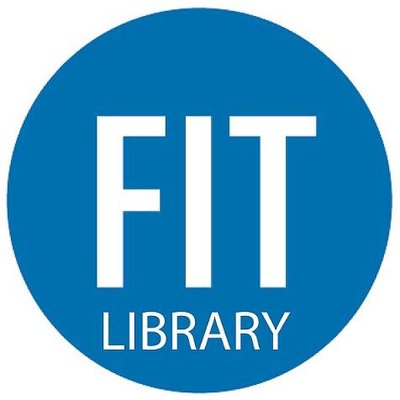Health Smart Home with IoT – A State of Art Survey
DOI:
https://doi.org/10.61841/8n9ykb36Keywords:
Smart Health System, IOT, Art SurveyAbstract
Recent survey estimates that almost over a billion people are found to be disabled which is around quarter the amount of the world’s population. People with disabilities are particularly vulnerable to inadequacies in health care services and hence health care needs for individuals are unmet. Thus the introduction of a home automation technique for people with disabilities who would prefer to remain in the comfort of one’s own home and giving healthcare service is becoming a feasible option. In recent years several projects have been carried out with the aim to ensure better quality of life for disabled patients by applying Internet of things (IoT) in healthcare domain and building an intelligent smart health home. The survey encompasses the complex issues, paucity of diverse techniques proposed for control and monitoring health status systems and a better way to meet the needs of the disabled patients over other techniques.
Downloads
References
[1] EtiennePardo, DavidEspes, PhilippeLeParc (2016) A Framework for Anomaly Diagnosis in Smart Homes Based on Ontology. The 7thInternational Conference on Ambient Systems, Networks and Technologies (ANT2016).Procedia Computer Science Vol 83 pp545–552.
[2] Ali Hussein, Mehdi Adda, Mirna Atieh, Walid Fahs (2014) Smart Home Design for Disabled People based on Neural Networks. The 5thInternational Conference on Emerging Ubiquitous Systems and Pervasive Networks (EUSPN-2014). Procedia Computer Science Vol 37, pp117-126.
[3] Lukas Smirek, Gottfried Zimmermann, Michael Beigl (2016) Just a Smart Home or Your Smart Home – A Framework for personalized User Interfaces Based on Eclipse Smart Home and Universal Remote Console. The 7th International Conference on Emerging Ubiquitous Systems and Pervasive Networks (EUSPN2016) Procedia Computer Science Vol98(C), October 2016 pp 107-116.
[4] Pavle Skocir, Petar Krivic, Matea Tomeljak, Mario Kusek, Gordan Jezic (2016) Activity detection in smart home environment. 20th International Conference on Knowledge Based and Intelligent Information and Engineering Systems. Procedia Computer Science Vol 96, pp 672 – 681.
[5] Juan Ye, Graeme Stevenson, Simon Dobson (2016) Detecting abnormal events on binary sensors in smart home Environments. Pervasive and Mobile Computing, Vol 33, pp 32-49.
[6] Vibhutesh Kumar Singh, Sanjeev Baghoriya, Vivek Ashok Bohara (2015) HELPER: A Home assisted and cost-Effective Living system for People with disabilities and homebound Elderly. 2015 IEEE 26th International Symposium on Personal, Indoor and Mobile Radio Communications - (PIMRC): Services Applications and Business, DOI:10.1109/PIMRC.2015.7343647.
[7] Lili Liu, Eleni Stroulia, Ioanis Nikolaidis, Antonio Miguel-Cruz, Adriana Rios Rincon (2016) Smart homes and home health monitoring technologies for older adults: A systematic review. Vol 91,pp 44-59.
[8] Kashfia Sailunaz, Musaed Alhussein, Md. Shahiduzzaman, Farzana Anowar, Khondaker Abdullah Al Mamun (2016) CMED: Cloud based medical system framework for rural health monitoring in developing countries. Computers and Electrical Engineering Vol 53 (C), pp469-481.
[9] Veslemoy Guise,Siriwig(2016) Preparing for Organizational Change in Home Health Care with Simulation Based Training, International Nursing Association for Clinical Simulation and Learning. Volume 12 (11), pp496–503.
[10] Antonio Fernandez-Caballero, Arturo Martinez-Rodrigo, Jose Manuel Pastor, Jose Carlos Castillo, Elena Lozano -Monasor, Maria T.Lopez, Roberto Zangroniz, Jose Miguel Latorre, Alicia Fernandez-Sotos (2016) Smart environment architecture for emotion detection and regulation,
Journal of Biomedical Informatics, Vol 64, pp55–73.
[11] Machiko R. Tomita, Linda S.Russ, Ramalingam Sridhar, Bruce J.Naughton. (2010) Smart home with healthcare technologies for community-dwelling older adults, Intech Open Science, DOI: 10.5772/8411.
[12] Mari Carmen Domingo (2012) An overview of the Internet of Things for people with disabilities. Journal of Network and Computer Applications Vol 35, (2), pp584-596.
[13] Sharon Varghese (2016) Application of IoT to improve the lifestyle of differently abled people. IOSR Journal of Computer Engineering (IOSR- JCE) pp29-34.
[14] Gagan (2016) IoT based system for person with physical disability. International Journal of Innovative Research in Electrical, Electronics, Instrumentation and Control Engineering Nitte Conference on Advances in Electrical Engineering NCAEE-2016 NMAM Institute of Technology, Nitte Vol. 4(2).
[15] Gaurav T iwari, Riyaj Kazi (2015) IoT based Interactive Industrial Home wireless system, Energy management system and embedded data acquisition system to display on web page using GPRS, SMS &Email alert. International Journal of Technology and Science, ISSN (Online) 2350-1111, (Print)2350-1103Vol5(1), pp.5-10.
[16] Dan D. Koo, John J. Lee, Aleksei Sebastiani, Jonghoon Kim (2016) An Internet-of-Things (IoT) system development and implementation for bathroom safety enhancement. International Conference on Sustainable Design, Engineering and Construction. Procedia Computer Science Procedia Computer Science Procedia Computer Science Vol 145, pp 396- 403.
[17] Yuehong Yin, Yan Zeng, Xing Chen, Yuanjie Fan (2016) The internet of things in healthcare: An overview. Journal of Industrial Information Integration Vol 1,pp 3–13.
[18] Jorge Gomez, Byron Oviedo, Emilio Zhuma (2016) Patient Monitoring System Based on Internet of Things. The 7th International Conference on Ambient Systems, Networks and Technologies (ANT 2016), Procedia Computer Science, Vol 83, pp90–97.
[19] Md Muztoba, Ujjwal Gupta, Tanvir Mustofa, Umit Y. Ogras (2015) Robust Communication with loT Devices using Wearable Brain Machine Interfaces. IEEE/ACM International Conference on Computer Aided Design (ICCAD). DOI:10.1109/ICCAD.2015.7372571.
[20] Xiao, J. (2019). SVM and KNN ensemble learning for traffic incident detection. Physica A: Statistical Mechanics and Its Applications, 517, 29–35. https://doi.org/10.1016/j.physa.2018.10.060
Downloads
Published
Issue
Section
License
Copyright (c) 2020 AUTHOR

This work is licensed under a Creative Commons Attribution 4.0 International License.
You are free to:
- Share — copy and redistribute the material in any medium or format for any purpose, even commercially.
- Adapt — remix, transform, and build upon the material for any purpose, even commercially.
- The licensor cannot revoke these freedoms as long as you follow the license terms.
Under the following terms:
- Attribution — You must give appropriate credit , provide a link to the license, and indicate if changes were made . You may do so in any reasonable manner, but not in any way that suggests the licensor endorses you or your use.
- No additional restrictions — You may not apply legal terms or technological measures that legally restrict others from doing anything the license permits.
Notices:
You do not have to comply with the license for elements of the material in the public domain or where your use is permitted by an applicable exception or limitation .
No warranties are given. The license may not give you all of the permissions necessary for your intended use. For example, other rights such as publicity, privacy, or moral rights may limit how you use the material.
















